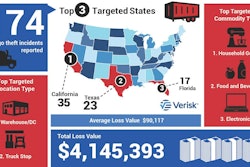
This is the first of a two-part series covering strategies for attracting buyers and preparing for a sale of a trucking company, and how to prepare to enter the market as a buyer.
Despite economic headwinds, including rising operating costs and high capital costs in contrast with low freight rates, momentum in merger and acquisition deals continues.
According to data from S&P Capital IQ, the transportation and logistics sector saw a total deal value of $29.7 billion with 52 disclosed deals from November 2023 to April 2024, up from $22 billion and 47 deals in the previous six months. While relatively stable, these numbers still account for only 61% and 68% of the pre-COVID-19 levels.
A McKinsey report in February noted that a top priority for M&A investment across transportation and logistics sector is the pursuit of acquisition targets created by the 2023 down cycle.
For a company to become an attractive acquisition target, a crucial step is ensuring financial books are in order, said Left Lane Associates President Peter Stefanovich. This includes making sure you have key customers, employees and suppliers under contract, Stefanovich said. A company with secured contracts is likely to have a higher valuation and predictable revenue stream, which are attractive to potential buyers.
Even in an environment of lower rates and demand levels, companies can establish a solid profitability business profile, said Aresenio Martinez, partner in McKinsey’s travel, logistics and infrastructure practice.
"They could consider focusing on serving profitable lanes and customers, avoiding falling in the revenue growth trap, and capturing customers and volumes that allow for strong head- and back-haul utilization," Martinez said.
He added it’s also worth considering upscaling with new digital capabilities to create operational productivity expansion – such as higher utilization and reduction of driven miles – and new commercial channels.
Martinez noted fleets can also explore M&A of low-multiple companies that can be transformed and can create cost and commercial synergies, including expand service offerings, better leverage fixed costs, and optimize asset management and procurement opportunities.
Trust is an important factor
“In an M&A transaction, the acquirer is paying a price today for an expected benefit in the future,” said Jonathan Adams, managing director of transportation and logistics at Capstone Partners. “It follows that the more credibly and persuasively those rewards can be communicated, the greater the value the buyer is likely to place on the business.”
The riskier and more unknown a company appears; the less willing people are to buy or invest in it.
To alleviate risk, Adams said when they advise sellers, they spend a lot of time compiling all information that could be relevant to the transaction and reduce the number of unknown factors. Accounting issues are often an area of uncertainty, he said. Especially with companies that don’t have audited accounts, they are advised to obtain a “sell-side quality of earnings report.”
“The opposite of fear, in corporate transactions at least, is trust,” said Adams. “So, we also spend a lot of time in our sale processes building trust between buyer and sellers. While inflated or ‘hockey-stick’ projections might, at first glance, appear to increase the potential rewards, the damage they do to the sellers’ credibility almost always means an overall loss of value. Remember, perceived risk reduces perceived value."
Adams pointed out that a common mistake among sellers is the “inflationary expectations spiral.”
Aspiring sellers aiming for maximum return often present investment bankers with overly optimistic financial forecasts that surpass the company’s actual potential. These bankers, aware of the seller’s desires, then compete by offering inflated and unrealistic valuations.
Adams said this creates a cycle of heightened expectations, leading to feelings of optimism and expected prosperity until the market reality inevitably sets in.
To avoid outcomes like this, Adams advised would-be sellers to understand that value is an output delivered by the market. “Rather than choosing the advisor touting the highest valuation, choose instead the one that displays the greatest knowledge and experience of the factors that drive the market’s valuation of individual companies.”
Stefanovich highlighted another common mistake: attempting to sell a company without the appropriate M&A expertise from the right accountant and lawyer.
“People and companies like us exist for a reason. They have to continue to run their business while they’re trying to sell it. If you’re trying to do both, you’re going to hurt both your business and attempt to sell it at the same time,” he said.
Adams emphasized that while engaging with an advisor who understands your company's strengths is crucial, it is equally important for the advisor to recognize its weaknesses. This enables them to craft a credible and persuasive case for the company's value, thereby earning the buyer's confidence.













